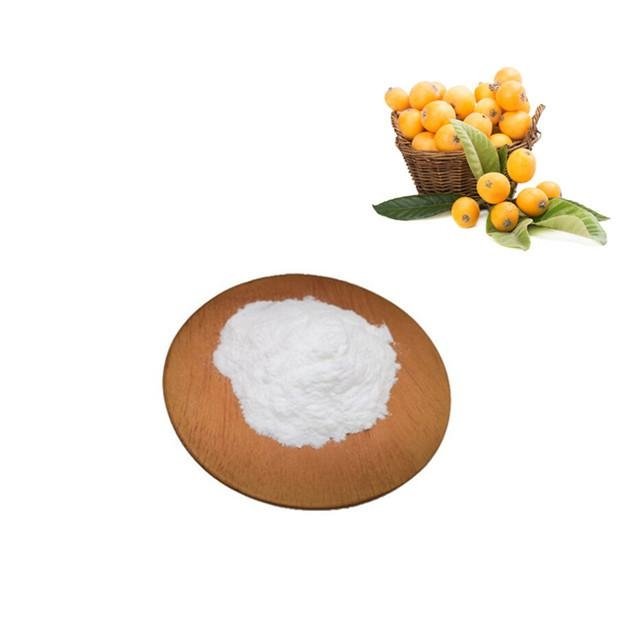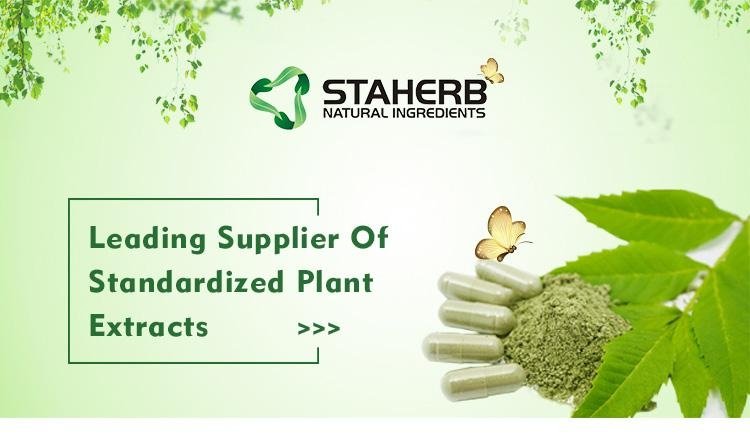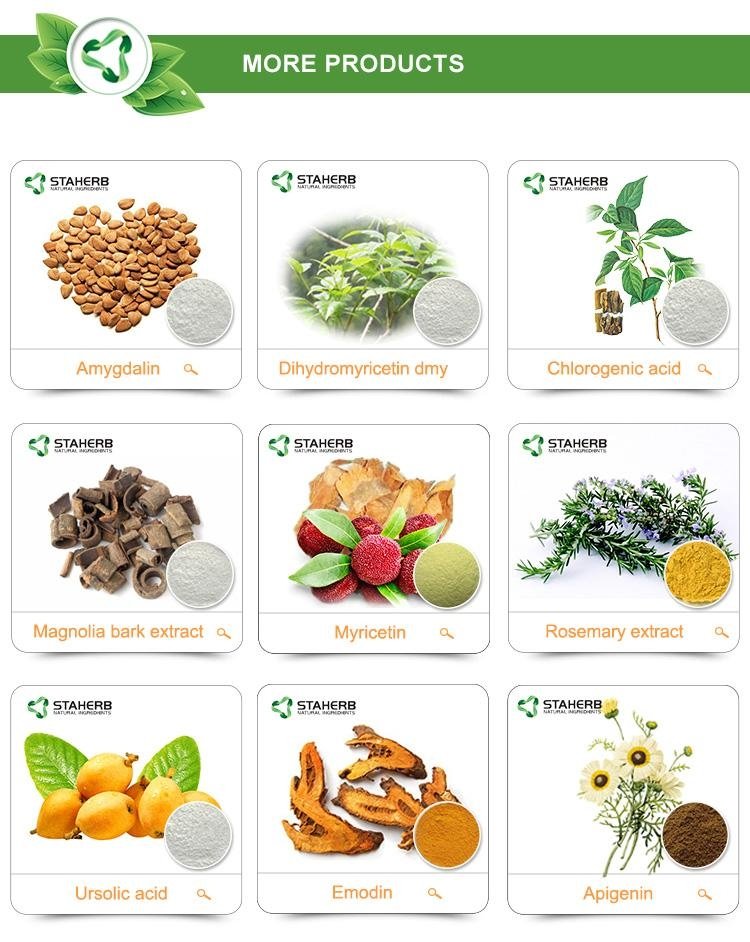-
1.Gisbert AD, Romero C, Martínez-Calvo J, Leida C, Llácer G, Badenes ML (2009) Genetic diversity evaluation of a loquat (Eriobotrya japonica (Thunb.) Lindl.) germplasm collection by SSRs and S-allele fragments. Euphytica 168:121–134
-
2.Pareek S, Benkeblia N, Janick J, Cao S, Yahia EM (2014) Postharvest physiology and technology of loquat (Eriobotrya japonica Lindl.) fruit. J Sci Food Agric 94:1495–1504
-
3.Li X, Xu C, Chen K (2016) Nutritional composition of fruit cultivars: loquat (Eriobotrya japonica Lindl.). In: Nutritional composition of fruit cultivars. Academic, San Diego, pp 371–394
-
4.Femenia A, Garcia-Conesa M, Simal S, Rosselló C (1998) Characterisation of the cell walls of loquat (Eriobotrya japonica L.) fruit tissues. Carbohydr Polym 35:169–177
-
5.Freihat NM, Al-Ghzawi AAM, Zaitoun S, Alqudah A (2008) Fruit set and quality of loquats (Eriobotrya japonica) as effected by pollinations under sub-humid Mediterranean. Sci Hortic 117:58–62
-
6.Fu X, Kong W, Peng G, Zhou J, Azam M, Xu C, Chen K (2011) Plastid structure and carotenogenic gene expression in red-and white-fleshed loquat (Eriobotrya japonica) fruits. J Exp Bot 63:341–354
-
7.Zhang W, Zhao X, Sun C, Li X, Chen K (2015) Phenolic composition from different loquat (Eriobotrya japonica Lindl.) cultivars grown in China and their antioxidant properties. Molecules 20:542–555
-
8.Tian S, Li B, Ding Z (2007) Physiological properties and storage technologies of loquat fruit. Fresh Prod 1:76–81
-
9.Liu Y, Zhang W, Xu C, Li X (2016) Biological activities of extracts from loquat (Eriobotrya japonica Lindl.): a review. Int J Mol Sci 17(12):1983
-
10.Baljinder S, Seena G, Dharmendra K, Vikas G, Bansal P (2010) Pharmacological potential of Eriobotrya japonica – an overview. Int Res J Pharm 1:95–99
-
11.Lin SQ, Sharpe RH, Janick J (1999) Loquat: botany and horticulture. Hortic Rev 23:233–276
-
12.Zhou CH, Xu CJ, Sun CD, Li X, Chen KS (2007) Carotenoids in white-and red-fleshed loquat fruits. J Agric Food Chem 55:7822–7830
-
13.Polat AA (2007) Loquat production in Turkey: problems and solutions. Eur J Plant Sci Biot 1:187–199
-
14.Kumar R, Pallavi G (2014) A critical review on loquat (Eriobotrya japonica Thunb/Lindl). Int J Pharm Biol Arch 5:1–7
-
15.Yu DJ (1979) The taxonomy of Chinese fruit trees (in Chinese), vol 3. Agri Press, Beijing, pp 309–316
-
16.Huxley A (1992) The new Royal Horticultural Society dictionary of gardening. Macmillan, London, p 196
-
17.Zhang HZ, Peng SA, Cai LH, Fang DQ (1990) The germplasm resources of the genus Eriobotrya with special reference on the origin of E. japonica Lindl. Acta Hort Sinica 17:5–12
-
18.Liang ZZ, Aquino R, De Feo V, De Simone F, Pizza C (1990) Polyhydroxylated triterpenes from Eriobotrya japonica. Planta Med 56:330–332
-
19.Godoy HT, Amaya DB (1995) Carotenoid composition and vitamin A value of Brazilian loquat (Eriobotrya japonica Lindl.). Arch Latinoam Nutr 45:336–339
-
20.Ju J, Zhou L, Lin G, Liu D, Wang L, Yang J (2003) Studies on constituents of triterpene acids from Eriobotrya japonica and their anti-inflammatory and antitussive effects. Zhongguoyaoxuezazhi 38:752–760
-
21.Koba K, Matsuoka A, Osada K, Huang YS (2007) Effect of loquat (Eriobotrya japonica) extracts on LDL oxidation. Food Chem 104:308–316
-
22.Pande G, Akoh CC (2010) Organic acids, antioxidant capacity, phenolic content and lipid characterisation of Georgia-grown underutilized fruit crops. Food Chem 120:1067–1075
-
23.Li W, Wang X, Zhang J, Zhao X, Wu Y, Tan S, Gao X (2019) Multivariate analysis illuminates the effects of vacuum drying on the extractable and nonextractable polyphenols profile of loquat fruit. J Food Sci 84:726–737
-
24.Ferreres F, Gomes D, Valentão P, Gonçalves R, Pio R, Chagas EA, Andrade PB (2009) Improved loquat (Eriobotrya japonica Lindl.) cultivars: variation of phenolics and antioxidative potential. Food Chem 114:1019–1027
-
25.Fu X, Feng C, Wang C, Yin X, Lu P, Grierson D, Chen K (2014) Involvement of multiple phytoene synthase genes in tissue-and cultivar-specific accumulation of carotenoids in loquat. J Exp Bot 65:4679–4689
-
26.de Faria AF, Hasegawa PN, Chagas EA, Pio R, Purgatto E, Mercadante AZ (2009) Cultivar influence on carotenoid composition of loquats from Brazil. J Food Compos Anal 22:196–203
-
27.Zhou CH, Li X, Zhang WS, Sun CD, Chen KS (2011) Oleanolic and ursolic acid in the fruit of Eriobotrya japonica Lindl. J Med Plants Res 5:1735–1740
-
28.Zhou C, Chen K, Sun C, Chen Q, Zhang W, Li X (2007) Determination of oleanolic acid, ursolic acid and amygdalin in the flower of Eriobotrya japonica Lindl by HPLC. Biomed Chromatogr 21:755–761
-
29.Hasegawa PN, Faria de AF, Mercadante AZ, Chagas EA, Pio R, Lajolo FM, Cordenunsi BR, Purgatto E (2010) Chemical composition of five loquat cultivars planted in Brazil. Food Sci Technol 30:552–559
-
30.Wei XQ, Deng CJ, Zhang XJ, Zheng S, Hu WS, Zheng SQ (2009) Analysis of vitamin C and total acid contents of loquat germplasm resources. Fujian Fruits 3:30–33
-
31.Zhang LH, Yang ST, Xu HD, Li SF (2008) Analysis of aromatic components from flowers of Eriobotyra japonica by SPME-GC-MS. Food Sci Technol 3:108–110
-
32.Yin MC, Chan KC (2007) Non-enzymatic antioxidative and antiglycative effects of oleanolic acid and ursolic acid. J Agric Food Chem 55:7177–7181
-
33.Fontanay S, Grare M, Mayer J, Finance C, Duval RE (2008) Ursolic, oleanolic and betulinic acids: antibacterial spectra and selectivity indexes. J Ethnopharmacol 120:272–276
-
34.Tsai SJ, Yin MC (2008) Antioxidative and anti-inflammatory protection of oleanolic acid and ursolic acid in pc12 cells. J Food Sci 73:H174–H178
-
35.Wang ZH, Hsu CC, Huang CN, Yin MC (2010) Anti-glycative effects of oleanolic acid and ursolic acid in kidney of diabetic mice. Eur J Pharmacol 628:255–260
-
36.Hamada A, Yoshioka S, Takuma D, Yokota J, Cui T, Kusunose M, Nishioka Y (2004) The effect of Eriobotrya japonica seed extract on oxidative stress in adriamycin-induced nephropathy in rats. Biol Pharm Bull 27:1961–1964
-
37.Yoshioka S, Hamada A, Jobu K, Yokota J, Onogawa M, Kyotani S, Nishioka Y (2010) Effects of Eriobotrya japonica seed extract on oxidative stress in rats with non-alcoholic steatohepatitis. J Pharm Pharmacol 62:241–246
-
38.Takuma D, Guangchen S, Yokota J, Hamada A, Onogawa M, Yoshioka S, Nishioka Y (2008) Effect of Eriobotrya japonica seed extract on 5-fluorouracil-induced mucositis in hamsters. Biol Pharm Bull 31:250–254
-
39.Sun G, Liu Y, Zhu J, Iguchi M, Yoshioka S, Miyamura M, Kyotani S (2010) Immunomodulatory effect of Eriobotrya japonica seed extract on allergic dermatitis rats. J Nutr Sci Vita 56:145–149
-
40.Lin JY, Tang CY (2008) Strawberry, loquat, mulberry, and bitter melon juices exhibit prophylactic effects on LPS-induced inflammation using murine peritoneal macrophages. Food Chem 107:1587–1596
-
41.Ge JF, Wang TY, Zhao B, Lv XW, Jin Y, Peng L, Li J (2009) Anti-inflammatory effect of triterpenoic acids of Eriobotrya japonica (Thunb.) Lindl leaf on rat model of chronic bronchitis. Am J Chin Med 37:309–321
-
42.Huang Y, Li J, Wang R, Wu Q, Li YH, Yu SC, Wang YY (2007) Effect of triterpene acids of Eriobotrya japonica (Thunb.) Lindl. leaf on inflammatory cytokine and mediator induction from alveolar macrophages of chronic bronchitic rats. Infl Res 56:76–82
-
43.Lee CH, Wu SL, Chen JC, Li CC, Lo HY, Cheng WY, Ho TY (2008) Eriobotrya japonica leaf and its triterpenes inhibited lipopolysaccharide-induced cytokines and inducible enzyme production via the nuclear factor-κB signaling pathway in lung epithelial cells. Am J Chin Med 36:1185–1198
-
44.Kwon HJ, Kang MJ, Kim HJ, Choi JS, Paik KJ, Chung HY (2000) Inhibition of NFkappa B by methyl chlorogenate from Eriobotrya japonica. Mol Cells 10:241–246
-
45.Lee MH, Son YK, Han YN (2004) Tissue factor inhibitory sesquiterpene glycoside from Eriobotrya japonica. Arch Pharm Res 27:619
-
46.Matalka KZ, Ali D, El Khawad A, Qa’dan F (2007) The differential effect of Eriobotrya japonica hydrophilic leaf extract on cytokines production and modulation. Cytokine 40:235–240
-
47.Chang CT, Huang SS, Lin SS, Amagaya S, Ho HY, Hou WC, Huang GJ (2011) Anti-inflammatory activities of tormentic acid from suspension cells of Eriobotrya japonica ex vivo and in vivo. Food Chem 127:1131–1137
-
48.Li WL, Wu JL, Ren BR, Chen J, Lu CG (2007) Pharmacological studies on anti-hyperglycemic effect of Folium eriobotryae. Am J Chin Med 35:705–711
-
49.Tanaka K, Nishizono S, Makino N, Tamaru S, Terai O, Ikeda I (2008) Hypoglycemic activity of Eriobotrya japonica seeds in type 2 diabetic rats and mice. Biosci Biotechnol Biochem 72:693–686
-
50.Lü H, Chen J, Li WL, Ren BR, Wu JL, Kang HY, De Kimpe N (2009) Hypoglycemic and hypolipidemic effects of the total triterpene acid fraction from Folium eriobotryae. J Ethnopharmacol 122:486–491
-
51.Lü H, Chen J, Li WL, Ren BR, Wu JL, Zhang HQ (2009) Hypoglycemic effect of the total flavonoid fraction from Folium eriobotryae. Phytomedicine 16:967–971
-
52.Ludvik BH, Mahdjoobian K, Waldhaeusl W, Hofer A, Prager R, Kautzky-Willer A, Pacini G (2002) The effect of Ipomoea batatas (Caiapo) on glucose metabolism and serum cholesterol in patients with type 2 diabetes: a randomized study. Diabetes Care 25:239–240
-
53.Ludvik B, Waldhäusl W, Prager R, Kautzky-Willer A, Pacini G (2003) Mode of action of Ipomoea batatas (Caiapo) in type 2 diabetic patients. Metabolism 52:875–880
-
54.Sakuramata Y, Oe H, Kusano S, Aki O (2004) Effects of combination of Caiapo® with other plant derived substance on anti-diabetic efficacy in KK-Ay mice. BioFactors 22:149–152
-
55.Shih CC, Ciou JL, Lin CH, Wu JB, Ho HY (2013) Cell suspension culture of Eriobotrya japonica regulates the diabetic and hyperlipidemic signs of high-fat-fed mice. Molecules 18:2726–2753
-
56.Komiya T, Achiwa Y, Katsuzaki H, Imai K, Sakurai S, Urakawa K, Hibasami H (1998) Effect of oleanolic and ursolic acids isolated from loquat (Eriobotrya japonica) on the growth of human lymphoid leukemia cells. Food Sci Technol Int Tokyo 4:282–284
-
57.Ito H, Kobayashi E, Takamatsu Y, Li SH, Hatano T, Sakagami H, Itoh Y (2000) Polyphenols from Eriobotrya japonica and their cytotoxicity against human oral tumor cell lines. Chem Pharm Bull 48:687–693
-
58.Alshaker HA, Qinna NA, Qadan F, Bustami M, Matalka KZ (2011) Eriobotrya japonica hydrophilic extract modulates cytokines in normal tissues, in the tumor of Meth-A-fibrosarcoma bearing mice, and enhances their survival time. BMC Complement Altern Med 11:9
-
59.Kim MS, You MK, Rhyu DY, Jeong KS, Kim YJ, Baek HY, Kim HA (2011) Oral administration of loquat suppresses DMBA-induced breast cancer in rats. Food Sci Biotechnol 20:491–497
-
60.Kang SC, Lee CM, Choi H, Lee JH, Oh JS, Kwak JH, Zee OP (2006) Evaluation of oriental medicinal herbs for estrogenic and antiproliferative activities. Phytother Res 20:1017–1019
-
61.Kikuchi T, Akazawa H, Tabata K, Manosroi A, Manosroi J, Suzuki T, Akihisa T (2011) 3-O-(E)-p-coumaroyltormentic acid from Eriobotrya japonica leaves induces caspase-dependent apoptotic cell death in human leukemia cell line. Chem Pharm Bull 59:378–381
-
62.Nishioka Y, Yoshioka S, Kusunose M, Cui T, Hamada A, Ono M, Kyotani S (2002) Effects of extract derived from Eriobotrya japonica on liver function improvement in rats. Biol Pharm Bull 25:1053–1057
-
63.Yang Y, Huang Y, Huang C, Lv X, Liu L, Wang Y, Li J (2012) Antifibrosis effects of triterpene acids of Eriobotrya japonica (Thunb.) Lindl leaf in a rat model of bleomycin-induced pulmonary fibrosis. J Pharm Pharmacol 64:1751–1760
-
64.Kim SH, Shin TY (2009) Anti-inflammatory effect of leaves of Eriobotrya japonica correlating with attenuation of p38 MAPK, ERK, and NF-κB activation in mast cells. Toxicol In Vitro 23:1215–1219
-
65.Muramoto K, Quan RD, Namba T, Kyotani S, Miyamura M, Nishioka Y, Kaba H (2011) Ameliorative effects of Eriobotrya japonica seed extract on cellular aging in cultured rat fibroblasts. J Nat Med 65:254–261
-
66.Shih CC, Lin CH, Wu JB (2010) Eriobotrya japonica improves hyperlipidemia and reverses insulin resistance in high fat fed mice. Phytother Res 24:1769–1780
-
67.Cha DS, Eun JS, Jeon H (2011) Anti-inflammatory and antinociceptive properties of the leaves of Eriobotrya japonica. J Ethnopharmacol 134:305–312
-
68.Zhou CH, Li X, Xu CJ, Sun CD, Chen KS (2012) Hydrophilic and lipophilic antioxidant activity of loquat fruits. J Food Biochem 36:621–626
-
69.Zhou C, Sun C, Chen K, Li X (2011) Flavonoids, phenolics, and antioxidant capacity in the flower of Eriobotrya japonica Lindl. Int J Mol Sci 12:2935–2945
-
70.Polat AA, Çalişkan O, Serce S, Saraçoğlu O, Kaya C, Özgen M (2010) Determining total phenolic content and total antioxidant capacity of loquat cultivars grown in Hatay. Pharmacogn Mag 6:5
-
71.Xu HX, Chen JW (2011) Commercial quality, major bioactive compound content and antioxidant capacity of 12 cultivars of loquat (Eriobotrya japonica Lindl.) fruits. J Sci Food Agric 91:1057–1063
-
72.Ercisli S, Gozlekci S, Sengul M, Hegedus A, Tepe S (2012) Some physicochemical characteristics, bioactive content and antioxidant capacity of loquat (Eriobotrya japonica (Thunb.) Lindl.) fruits from Turkey. Sci Hortic 148:185–189
-
73.Yokota J, Takuma D, Hamada A, Onogawa M, Yoshioka S, Kusunose M, Nishioka Y (2006) Scavenging of reactive oxygen species by Eriobotrya japonica seed extract. Biol Pharm Bull 29:467–471
-
74.Bae D, You Y, Yoon HG, Kim K, Lee YH, Kim Y, Jun W (2010) Protective effects of loquat (Eriobotrya japonica) leaves against ethanol-induced toxicity in HepG2 cells transfected with CYP2E1. Food Sci Biotechnol 19:1093–1096
-
75.Eraso AJ, Albesa I (2007) Eriobotrya japonica counteracts reactive oxygen species and nitric oxide stimulated by chloramphenicol. Am J Chin Med 35:875–885
-
76.Banno N, Akihisa T, Tokuda H, Yasukawa K, Taguchi Y, Akazawa H, Nishino H (2005) Anti-inflammatory and antitumor-promoting effects of the triterpene acids from the leaves of Eriobotrya japonica. Biol Pharm Bull 28:1995–1999
-
77.Kashiwada Y, Wang HK, Nagao T, Kitanaka S, Yasuda I, Fujioka T, Ikeshiro Y (1998) Anti-AIDS agents. 30. Anti-HIV activity of oleanolic acid, pomolic acid, and structurally related triterpenoids. J Nat Prod 61:1090–1095
-
78.Taniguchi S, Imayoshi Y, Kobayashi E, Takamatsu Y, Ito H, Hatano T, Shimura S (2002) Production of bioactive triterpenes by Eriobotrya japonica calli. Phytochemistry 59:315–323
-
79.Zhang J, Xu HY, Wu YJ, Zhang X, Zhang LQ, Li YM (2019) Neutrophil elastase inhibitory effects of pentacyclic triterpenoids from Eriobotrya japonica (loquat leaves). J Ethnopharmacol 242:111713
-
80.Tan H, Zhao C, Zhu Q, Katakura Y, Tanaka H, Ohnuki K, Shimizu K (2019) Ursolic acid isolated from the leaves of loquat (Eriobotrya japonica) inhibited osteoclast differentiation through targeting exportin 5. J Agric Food Chem 67:3333–3340
-
81.Li F, Li Y, Li Q, Shi X, Guo Y (2017) Acute and subacute oral toxicity evaluation of Eriobotrya japonica leaf triterpene acids in ICR mice. Evid Based Complement Alternat Med 2017:1–9
-
82.Jeong MH, Seong NW, Lee JY, Kim YJ, Shin NR, Kim JC (2018) In vitro and in vivo evaluation of the genotoxicity of Eriobotrya japonica leaf extract. Regul Toxicol Pharmacol 99:238–243
-
83.Seong NW, Seo HS, Kim JH, Kim YJ, Kim E, Lee JY, Kim JC (2018) A 13-week subchronic toxicity study of an Eriobotrya japonica leaf extract in rats. J Ethnopharmacol 226:1–10

loquat leaf extract
1.Product Name:Loquat Leaf Extract
2.Latine Name: Eriobotrya japonica Lindl.
3.Active Ingredient:Ursolic acid
4.Part used: Leaf
5.Appearance: White to yellow powder
6.Test Mothod: HPLC, UV
7.Specification:Ursolic acid 25% 30% 90% 95% 98% HPLC

About Loquat leaf extract:
Loquat leaf extract contains a triterpenoid compound known as corosolic acid which has actions in stimulating glucose transport into cells. As such, loquat leaf plays a role in regulating levels of blood sugar and insulin in the blood. For some people, fluctuations in blood sugar and insulin are related to appetite, hunger and various food cravings particularly craving for carbohydrates such as bread and sweets. By keeping blood sugar and insulin levels in check, loquat leaf may be an effective supplement for promoting weight loss in certain individuals.
Loquat leaf extract function:
1.Loquat Leaf Extract has functions of calming, anti-inflammatory, antibacterial, antiviral, anti-ulcer, lower blood sugar and so on.
2.Loquat Leaf Extract has the effect on lowering blood lipid and sugar, can be used to prevent hyperlipidemia and obesity.
3.Loquat Leaf Extract has obvious function of antioxidant.
4.Loquat Leaf Extract has effect of protecting liver, and recovering liver.
5.Loquat Leaf Extract has the function of relieving cough and eliminating stomach nausea. It shows good effect on treating cough, asthma, stomach nausea and vexed hot and thirsty.
Loquat leaf extract application:
1.As raw material of drugs for anti-cancer, anti-inflammatory and antioxidant, Loquat leaf extract is widely used in the fields of medicine and health products.
2.As raw materials of drugs for antioxidant, it is widely used in cosmetics industry.
Why choose Staherb loquat leaf extract?
Changsha Staherb Natural Ingredients Co.,Ltd. specializes in the research,produce and sale for natural plant extracts, chemical intermediates, and chemical raw materials field many years.
Staherb supplies good quality raw material and excellent service and for pharmaceuticals field, food field, health supplements field, cosmetics field, beverage field, natural pigment field etc.
Staherb with advanced science research, modern management, good sales and after sales ability wins the satisfactions of clients from home and abroad.
For more product information,Pls contact at email sales09@staherb.cn
